Background | Origin | Habitat | Introduction and Spread | Impacts | Identification | Prevention and Control | Occurrences | New York Distribution Map
Background
Norway maple (Acer platanoides) is a large deciduous tree that can grow up to approximately 40-60 feet in height. They are tolerant of many different growing environments and have been a popular tree to plant on lawns and along streets because of their hardiness. Norway maples have very shallow roots and produce a great deal of shade which makes it difficult for grass and other plants to grow in the understory below. Additionally, they are prolific seed producers and are now invading forests and forest edges.
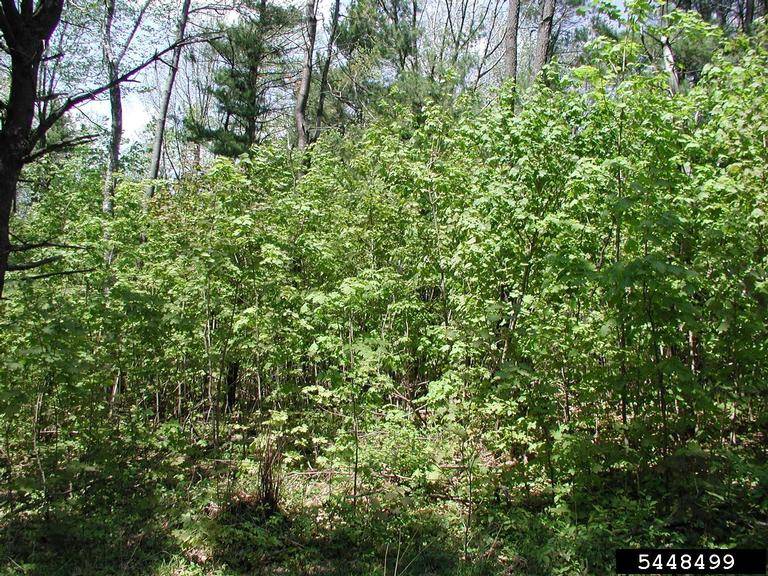
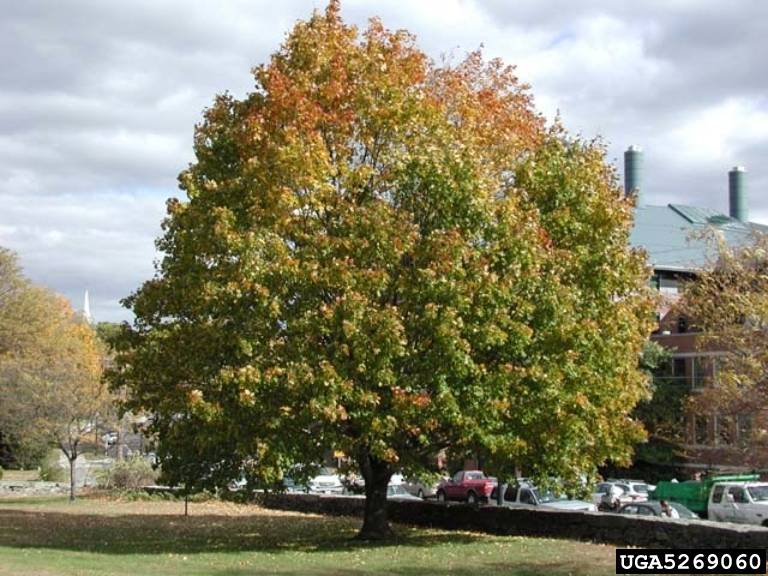
Origin
Norway maples are native to Europe and Western Asia.
Habitat
Norway maples are found growing all over the United States in many diverse environments. They are very well adapted to extreme soil types and found in hardy to USDA Zone 4. Norway Maples tolerate a wide range of temperatures. They do prefer full sun, but may also be seen in shady habitats. Also, this species is tolerant to sulfur dioxide pollution and ozone, so they can thrive in urban settings or forests. Norway Maples will be found in the United States anywhere from the border of Canada south to the Carolinas in early or late succession forests, wetlands, yards or gardens, or in disturbed open areas and roadsides.
Introduction and Spread
Many Norway maples made their way from Europe to the United States by being transplanted as ornamental specimens or by having individual seeds escape cultivation. These trees produce ample amounts of winged seed which are dispersed readily in the wind and germinate quickly. A suggested reason for the success of many invasive species is the absence of predators in the invaded habitat. A study by Cincotta et al. (2009) found that foliar insect and fungal damage was significantly higher on native sugar maples than on the invasive Norway maples. This could be one of the contributing factors to the Norway maple’s success.
Impacts
Forests that are intact are generally more likely to ward off invaders. However, Norway maple has been found to be very successful at establishing itself in a variety of conditions including mature, deeply shaded forests (Martin and Marks 2006). Due to the dense canopy of Norway maples, forest diversity is starting to decline because the excess shade they create inhibits the regeneration of sugar maples and other native seedlings. The shallow root system makes growing difficult for other native shrubs and wildflowers in the understory. In urban environments, the root systems also destroy pavement, requiring expensive repairs. Other species of flora and fauna, such as insects and birds, may indirectly be affected due to the change in resource diversity and availability. Norway maple is also susceptible to certain types of fungi, such as Verticillium wilt and anthracnose and may also serve as a host for aphids.
Identification
Norway maples have simple, green, and opposite leaves. Leaves of Norway maples usually are broader than they are high, about four to seven inches wide, with five prominent lobes. The bark of a Norway maple is grayish black and furrowed. This species tends to leaf out earlier in the spring than other maples and forms a broad-rounded crown. Yellow or greenish-yellow flowers are approximately 8 mm in diameter and are found in clusters that are present from April to May. During the summer, fruits mature into helicopter-like blades with wide-spreading wings. In the fall, leaves usually turn a pale yellow. One of the easiest ways to differentiate Norway maple from sugar maple is to cut the petiole (or leaf stalk) or vein and if a milky substances oozes out, it is a Norway maple. Also, bud tips of Norway maples are more blunt, whereas sugar maples are pointy and sharp.
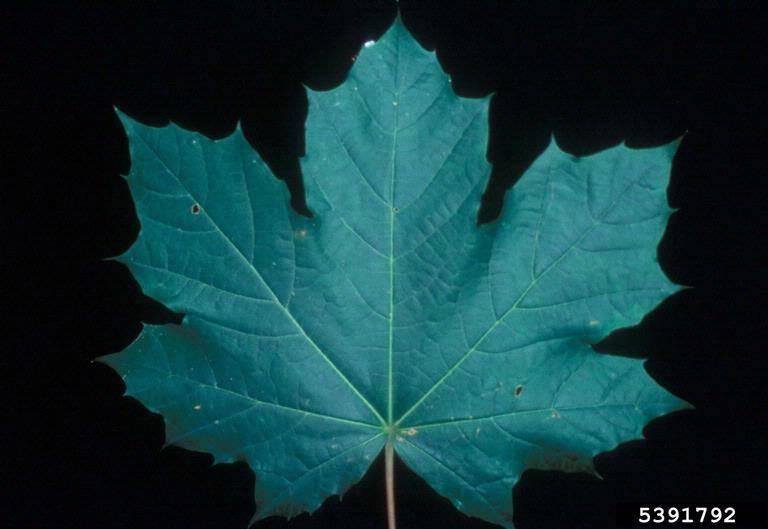
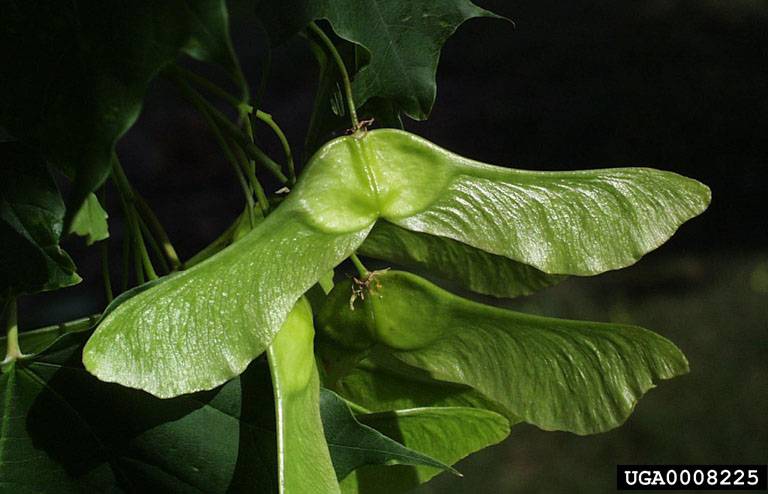
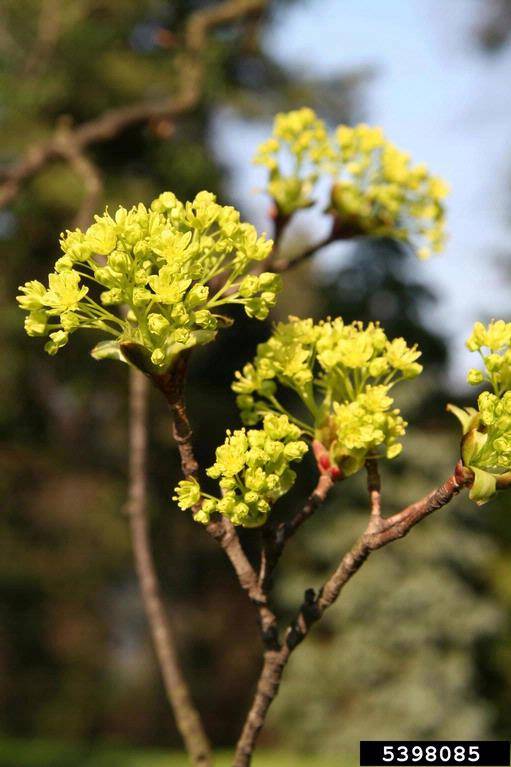
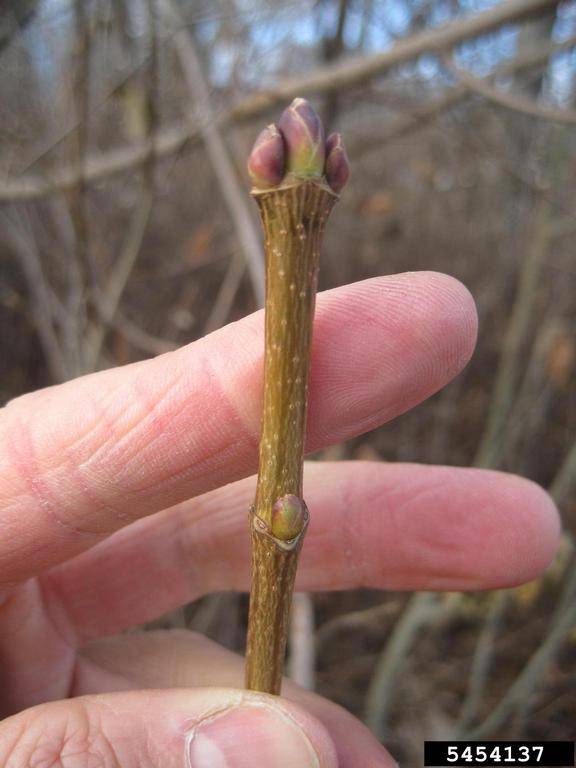
Prevention and Control
It is recommended to plant alternative tree species that are native to this region to prevent further spread of Norway maple. Other maple species that are native to the Northeastern United States include red maple (Acer rubrum), sugar maple (Acer saccharum), and silver maple (Acer saccharinum).
Seedlings of Norway maple can be pulled from moist soil before they get too large. Other types of manual removal include digging out saplings and root systems or cutting down large trees. Girdling the trees by removing the bark layer (including the cambium) can also be performed, but is most effective in the spring. Leftover stumps can be ground out or new growth that develops from old stumps can be cut in future years. Some chemical herbicides, such as glyphosate or triclopyr may be useful for control, but contact your local extension office for more information on chemical application and always follow state requirements and the instructions on the label.
Occurrences
Norway maple is found on both the western and eastern sides of the United States. It ranges from Canada in the north and down south to the Carolinas.
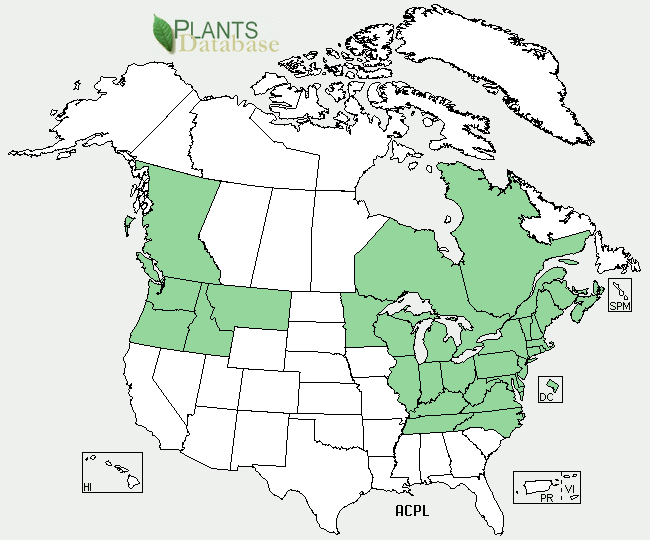
New York Distribution Map
This map shows confirmed observations (green points) submitted to the NYS Invasive Species Database. Absence of data does not necessarily mean absence of the species at that site, but that it has not been reported there. For more information, please visit iMapInvasives.



